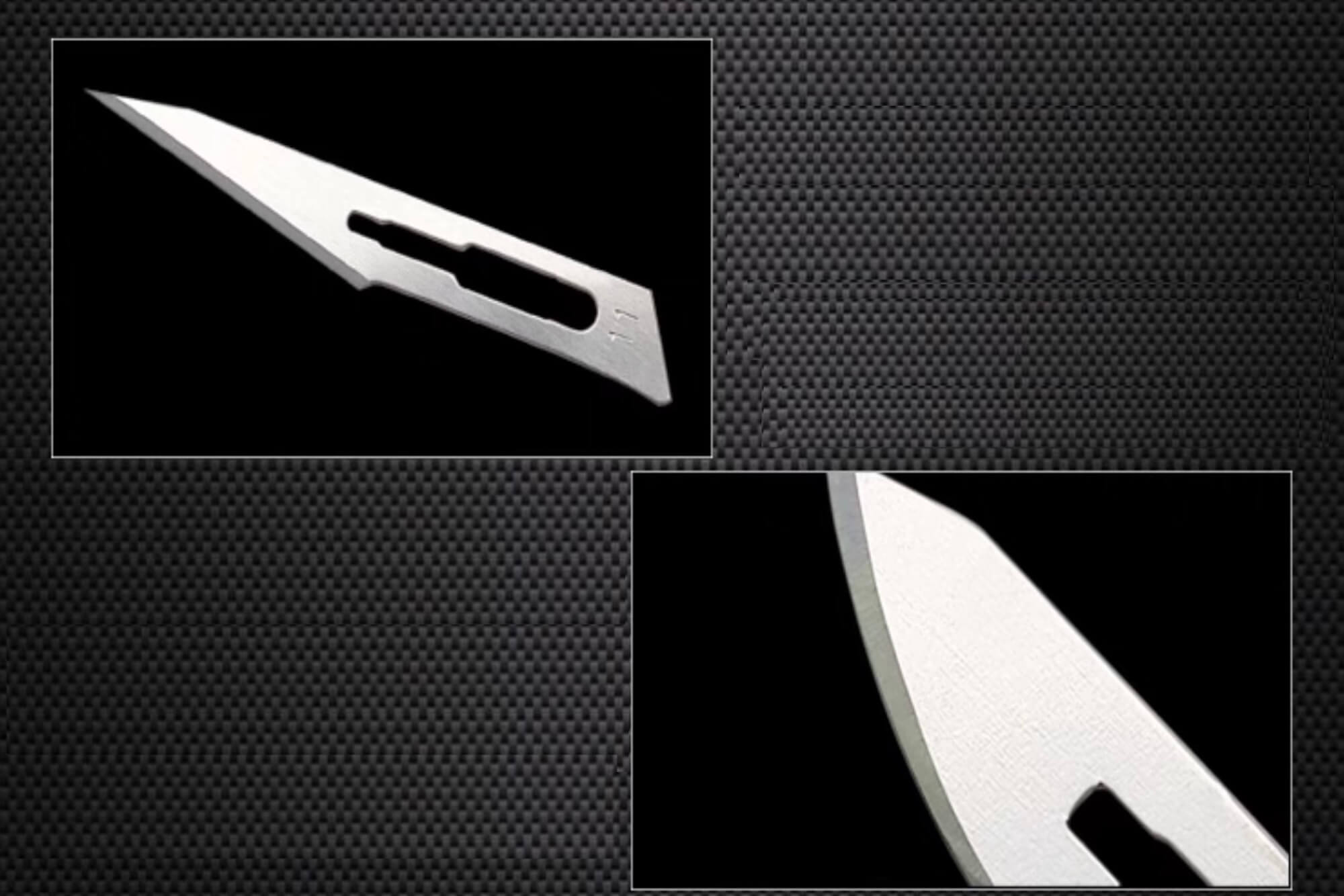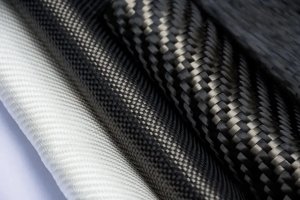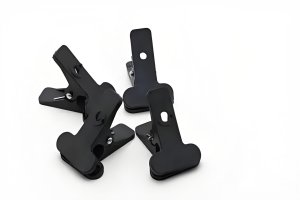Is Surgical Steel CNC-Friendly?
I still remember the first time I clamped a bar of surgical steel into a CNC mill. It looked just like any other stainless steel—shiny, dense, a little heavier than 304—but within minutes, I realized this wasn’t going to be a typical job. The cutter started to screech. Chips gummed up around the tool like melted plastic. And by the end of the first pocket cut, the edge was toast.
So, is surgical steel CNC-friendly? The short answer is yes—but it’s not beginner-friendly. It demands a much more calculated approach than machining aluminum or even mild stainless steels. You need the right tools, parameters, and cooling strategy, or you’re likely to burn through time, tooling, and patience.
The term “surgical steel” refers to a range of stainless steel alloys designed for medical and body-contact applications. It’s corrosion-resistant, biocompatible, and strong—exactly the kind of properties that make it perfect for surgical instruments and body jewelry. But those same properties make it notoriously difficult to machine.
From my own shop experience and from speaking with other machinists, it’s clear that CNC machining surgical steel can absolutely be done. But you need to treat it as a premium material that responds poorly to shortcuts.
If you’re a product designer looking to prototype medical tools, or a machine shop deciding whether to accept a job using surgical steel, this article will walk you through everything you need to know—from its metallurgical quirks to CNC setup decisions that can make or break the project.
Material Properties of Surgical Steel
Let’s start with the material itself. “Surgical steel” is not a single defined alloy, but rather a category of stainless steels that meet certain criteria for biocompatibility, corrosion resistance, and mechanical strength. These are essential for making tools that won’t rust or irritate human tissue, even after long exposure.
The most common surgical steel grades used in CNC machining include:
- 316L – a low-carbon variant of 316 stainless, often used in implants
- 420 – a martensitic stainless with decent hardness, used for tools
- 440C – a high-carbon stainless that offers blade-grade hardness
- 17-4PH – a precipitation-hardened steel ideal for load-bearing components
Each has its own machining behavior. Here’s a comparison I often use in workshops to help newcomers choose the right material:
Table 1: Comparison of Surgical Steel Grades
| Grade | Common Applications | Machinability (1–10) | Corrosion Resistance | Biocompatibility | Hardness (HRC) | Notes |
|---|---|---|---|---|---|---|
| 316L | Implants, piercings | 4 | Excellent | Excellent | 20–25 | Gummy, low hardness, work-hardens fast |
| 420 | Surgical tools, scissors | 5 | Good | Good | 50–55 | Easy to polish, moderate corrosion |
| 440C | Blades, cutters, high-end tools | 3 | Fair | Good | 58–60 | Brittle, edge retention, wears tools |
| 17-4PH | Implants, robotic components | 6 | Very Good | Good | 35–45 | Excellent strength, stable cutting |
| 304 | General fabrication | 7 | Good | Acceptable | 18–22 | Not surgical-grade, used in housings |
| 303 | Machining-focused stainless | 9 | Low | Not recommended | 18–20 | Easy to cut, but lacks medical-grade traits |
In my experience, 316L is the most common, especially for parts that need skin contact or resistance to bodily fluids. However, it’s also the most frustrating to machine due to its low hardness and high work-hardening tendency. You’ll often get stringy chips and thermal buildup unless your feeds and speeds are just right.
What makes surgical steel hard to machine is exactly what makes it desirable in the real world: its strength under stress, its resistance to corrosion, and its ability to be sterilized without degrading. But these same characteristics can wear down tools quickly and challenge even experienced machinists.
One of the biggest misconceptions I’ve seen in clients is assuming all stainless steels behave the same. They don’t. Surgical-grade materials are engineered to withstand more extreme environments, and that means they behave differently under a cutter.
When evaluating whether a part should be made from surgical steel, ask:
- Will it be in contact with skin or internal tissue?
- Does it require resistance to fluids like blood or saline?
- Is surface finish critical?
- Will the part be under mechanical stress?
If the answer is yes to any of these, surgical steel is a justified choice—but only if you’re prepared for the challenges in machining it.
Machining Challenges and How to Solve Them
Let’s talk shop. Once you’ve committed to using surgical steel, you need to prepare for a very different kind of CNC experience. The challenges you’ll face are both material-related and process-related. They include thermal issues, chip control, and aggressive tool wear.
I’ve broken tools, overheated parts, and stalled spindles on surgical steel more times than I’d like to admit. But every mistake taught me something—and here are the key lessons.
🔧 Problem 1: Rapid Work Hardening
Surgical steel—especially 316L—tends to harden in response to cutting. Once that happens, subsequent tool passes will feel like cutting through tempered spring steel.
How to fix it:
- Use sharp, coated carbide tools
- Avoid rubbing by maintaining consistent chip load
- Use climb milling, not conventional
- Minimize dwell times and tool pauses
🔧 Problem 2: Low Thermal Conductivity
Surgical steel holds heat. Unlike aluminum, which dissipates heat through the part and chips, surgical steel concentrates it at the tool tip.
How to fix it:
- Use flood coolant wherever possible
- If flood isn’t available, high-efficiency mist is your friend
- Keep your DOC (depth of cut) moderate to reduce localized heating
🔧 Problem 3: Tool Wear
This is the one I underestimated the most. High-carbon surgical steel like 440C chews through end mills at an alarming rate. Even with top-grade carbide, I saw degradation after just one batch run.
What works best:
- TiAlN or AlTiN-coated carbide end mills
- Replace tools before they fail — not after
- Use shorter tools with minimal stick-out to improve rigidity
🔧 Problem 4: Surface Finish and Tolerance Control
In surgical applications, finish is everything. Burs, tearing, or even minor discoloration from overheating can disqualify a part.
My go-to solutions:
- Light finishing passes with sharp tools
- Final polishing or passivation after machining
- Using HSM toolpaths to reduce tool load
Here’s a deeper look at what kind of parameters have worked for me and others in real-world jobs:
Table 2: Recommended CNC Parameters for Surgical Steel
| Steel Grade | Surface Speed (SFM) | Feed per Tooth (IPT) | DOC (inches) | Coolant Type | Notes |
|---|---|---|---|---|---|
| 316L | 80–120 | 0.0015–0.0020 | 0.03–0.06 | Flood/Mist | Requires low speed, watch for gum |
| 420 | 100–160 | 0.0015–0.0025 | 0.05–0.08 | Flood | Tough, but cleaner cut than 316L |
| 440C | 70–90 | 0.0010–0.0020 | 0.03–0.05 | Flood | High tool wear, monitor heat |
| 17-4PH | 160–200 | 0.0020–0.0030 | 0.06–0.10 | Mist/Flood | Excellent chip control, stable |
From personal use, I can say 17-4PH has been the most CNC-friendly of the surgical steels I’ve worked with. It doesn’t work-harden as aggressively, and it tolerates faster feeds.
Best Tooling and Parameters for CNC Machining Surgical Steel
One of the most valuable lessons I’ve learned working with surgical steel is this: tooling makes or breaks the job. You can have a perfectly tuned CNC machine and an optimized toolpath, but if your cutter isn’t right for surgical steel, you’re just burning money.
Surgical steel requires tooling that can withstand heat, handle hard materials, and produce clean cuts without excessive vibration. So let’s walk through the specific types of tools, coatings, geometries, and machine parameters that have worked best for me and other machinists I’ve collaborated with.
🛠 Tool Materials: Go Hard or Go Home
For surgical steel, forget HSS tools. They’ll dull in minutes and leave you with rough finishes and burnt edges. Carbide is the bare minimum.
I’ve had the best results with:
- Solid carbide end mills: Great for slotting and profiling
- Carbide drills: Especially those with coolant-through holes
- Indexable carbide tools: More efficient for large-volume jobs
Some machinists try coated HSS for budget reasons, but in my experience, the wear rate offsets any savings. The initial investment in premium carbide tools pays off in tool life, surface finish, and cycle time.
🎯 Tool Coatings Matter
Surgical steel generates a ton of heat. That’s where coatings become critical. Here are the most effective ones:
| Coating | Benefits with Surgical Steel |
|---|---|
| TiAlN | Excellent heat resistance, good for dry/mist cuts |
| AlTiN | Stronger against high-temp applications |
| TiCN | Slightly lower resistance than TiAlN, but better finish |
| Diamond-Like Coating (DLC) | Ideal for mirror-polished applications |
If your job involves high-polish surgical instruments or jewelry, DLC coatings provide an edge (literally) in achieving that pristine look.
📏 Tool Geometry: It’s in the Details
Tool geometry is often overlooked, but surgical steel will punish generic cutters. Use tools with:
- High rake angles for easier chip evacuation
- Variable flute geometry to reduce chatter
- Short flute lengths for increased rigidity
- Sharp corners with light corner radius for part strength and finish balance
For example, I switched from a 4-flute to a 3-flute end mill with a higher helix angle on 316L, and chip evacuation improved noticeably—less chatter, smoother finish.
🔧 Machine Setup: Everything Must Be Stable
You can’t get away with sloppy setups when working on surgical steel. I always double-check:
- Tool runout — anything over 0.0005″ affects finish and tool life
- Work holding — surgical steel is often hard, but not rigid; vibration causes finish defects
- Coolant delivery — make sure it’s hitting the cutting zone, not splashing off the stock
In one job, we added a coolant-through end mill on a high-speed spindle. The result? Surface temperature dropped by 40%, and tool life nearly doubled. That’s how sensitive surgical steel can be.
📈 CNC Programming Tips for Surgical Steel
Toolpaths and feeds matter. A lot. Avoid plunging when possible—ramping or helical entries reduce the chance of tool failure. Use adaptive clearing for roughing. HSM (high-speed machining) paths help maintain consistent chip load.
Some reliable strategies:
- Use trochoidal milling for slotting in hard steels
- Engagement angle under 25° in roughing to reduce heat
- Finishing passes at lower RPMs with coolant on full blast
And remember: never dry-run surgical steel without coolant. Even testing toolpaths with a dull cutter can start work hardening.
Design Considerations for CNC Machined Surgical Steel Parts
I’ve worked with product developers, biomedical engineers, and designers who didn’t realize how much design impacts machining. Just because you can model something in CAD doesn’t mean you should expect it to be easy—or cheap—to cut from surgical steel.
Designing with surgical steel means accounting for:
- The material’s hardness
- The need for ultra-smooth surfaces
- The potential for warping from heat or internal stress
- Tight tolerances often required in medical or wearable parts
Let’s dive into specific design tips based on what I’ve seen work in real projects.
✅ Tip 1: Avoid Thin Walls
Thin walls in surgical steel are a nightmare. The heat buildup during machining causes warping, and the vibration leads to chatter or part breakage.
Rule of thumb: keep walls no thinner than 1.5× the tool diameter, and brace long structures with fillets or gussets.
✅ Tip 2: Minimize Deep Cavities
Deep pockets require long tools, which increase tool deflection and vibration. That’s a recipe for bad surface finish and broken end mills.
Where possible:
- Split parts into separate pieces
- Use side-access designs instead of vertical bores
- Avoid aspect ratios (depth:width) over 3:1 without a good reason
✅ Tip 3: Choose Tolerances Wisely
It’s tempting to specify ±0.001″ on every feature “just in case,” but surgical steel isn’t always stable under high-precision constraints without post-machining treatments.
Use tighter tolerances only where necessary. For general features like slots or outer contours, ±0.005″ is often acceptable.
✅ Tip 4: Design for Polishing and Passivation
If the part will touch skin or internal tissue, it must be smooth—and that means designing for finishing:
- Add generous radii to reduce burrs
- Avoid sharp internal corners
- Allow access for polishing tools or passivation baths
One orthopedic part I helped prototype had tiny inside ribs that looked good on CAD—but polishing them added hours of manual work. A minor redesign cut finishing time by 60%.
✅ Tip 5: Think Like a Machinist
When in doubt, show your design to a machinist before prototyping. A 15-minute chat can save hours of rework.
In several cases, I’ve been brought in after the fact—when a beautiful design couldn’t be machined efficiently. With surgical steel, the cost of mistakes adds up quickly.
Where to Source Surgical Steel and How to Evaluate Suppliers
Before we even start cutting, we need the right raw material. That’s where many CNC projects go sideways—you can’t just grab any piece of shiny stainless and assume it’s surgical steel. I’ve learned the hard way that using subpar or uncertified steel not only ruins tooling, it can compromise safety and compliance, especially for medical parts.
🔍 What Makes Surgical Steel “Surgical”?
Not all stainless steels labeled “surgical” are created equal. For CNC machining, I specifically look for:
- Material certification: ISO 5832 or ASTM F899
- Traceability: Lot numbers, chemical analysis
- Condition: Annealed, cold-drawn, or hardened, depending on use
For example, when I machined a batch of piercing studs for a client, we ordered “medical stainless” from a non-certified supplier. Halfway through, we realized the material had inconsistent hardness and ferrite inclusions. That batch cost us 30+ man-hours in inspection and sorting.
Now, I work only with specialty suppliers who understand CNC machining and surgical-grade requirements.
🏢 Trusted Suppliers I’ve Used or Researched
Here are some reliable sources where I’ve sourced or evaluated surgical steel for CNC machining:
| Supplier Name | Region | Available Grades | Certification | CNC Machining Notes |
|---|---|---|---|---|
| ATI Specialty Metals | North America | 316L, 17-4PH, 420, 440C | Yes (ISO, ASTM) | Tight tolerance bar stock, consistent QC |
| Outokumpu | Europe | 316L, 304L, 17-4PH | Yes | Great surface finish, supports cut-to-size |
| Sandvik Materials | Global | Custom biomedical grades | Yes | Offers CNC-ready rods and powders (for hybrid AM) |
| Penn Stainless | U.S. | Full stainless range | Partial | Best for general-use surgical steel (non-implant) |
| Ulbrich Stainless Steels | U.S. | Precision coils, strips | Yes | Ideal for small medical hardware and thin parts |
When sourcing, I also look for machineability ratings and whether the supplier provides annealed material for easier CNC prep. For surgical steel, the condition of the steel bar—cold worked vs. annealed—can affect cycle time and tool life significantly.
📌 How to Vet a Supplier
Use this checklist:
- ✅ Do they provide material certifications?
- ✅ Is there a dedicated medical-grade product line?
- ✅ Can they deliver in toleranced bar or sheet sizes?
- ✅ Do they offer tech support for machining use cases?
- ✅ Have they supplied parts for FDA-registered devices?
If I can’t answer “yes” to at least 4 out of 5, I pass.
Also—don’t ignore minimum order quantities (MOQs). Some suppliers only deal in bulk. If you’re prototyping, look for distributors who work with small CNC shops.
💡 Insider Tip
When sourcing surgical steel for CNC jobs, always order a bit more than you need. It’s not just for safety—some stock may have unexpected warpage or inclusion issues. And with a material this tough, rework isn’t always an option.
Use Cases and Emerging Trends
When I started machining surgical steel, I assumed it was just for scalpels and bone plates. But over the years, I’ve worked on projects ranging from custom wearable medical devices to bio-compatible drone parts. The truth is, the demand for CNC-machined surgical steel is expanding rapidly.
💊 Medical Devices Beyond Tools
Today’s surgical steel goes into:
- Implantable fasteners and plates
- Endoscopic surgical components
- Dental brackets and orthodontic hardware
- Custom joint supports and 3D-milled orthotics
In these applications, part geometry is complex, and tolerances are tight. CNC is the only viable method of manufacturing.
📿 Body Jewelry & High-End Accessories
One of the more unexpected CNC jobs I took involved crafting threaded tunnels for ear stretching jewelry out of 316L surgical steel. The client wanted mirror finishes, laser-etched logos, and no surface flaws. It was more like making aerospace parts than body mod gear.
Why CNC? Because surgical steel lets you:
- Maintain hypoallergenic safety
- Polish to ultra-smooth finish
- Create intricate threaded, slotted, and multi-part designs
Jewelry clients care as much about tolerances as surgeons. A 0.02mm misalignment is a returned product.
📈 Wearable & Smart Healthcare Devices
Companies now integrate CNC-machined surgical steel components into wearable health monitors. Whether it’s a polished backing plate or electrode contact, the part needs to withstand:
- Skin contact over long periods
- Sweat, water, and external pressure
- Disinfection or sterilization
🔭 Future Trends in Surgical Steel Machining
From industry trends and trade shows, here’s what I see on the horizon:
| Trend | Impact on Surgical Steel CNC Use |
|---|---|
| Miniaturization | Micro-milling and high-speed spindles in demand |
| Hybrid Materials | Surgical steel + polymer assemblies require tight mating |
| Custom Implants (on-demand) | Direct machining of patient-specific geometries |
| Robotic Surgery Parts | Increasingly complex stainless internals |
In fact, I’m currently prototyping a modular surgical clamp for a robotic arm that uses both 316L and titanium inserts. It’s a testament to how flexible CNC machining of surgical steel has become—if you have the right tools, workflow, and mindset.
FAQ
1. What is surgical steel made of?
Surgical steel is typically a type of stainless steel that includes alloys like 316L, 420, and 440C. These grades contain chromium, molybdenum, and sometimes nickel to enhance corrosion resistance and biocompatibility.
2. How is surgical steel different from 316 stainless steel?
316 stainless is a broader category. Surgical steel usually refers to 316L (low carbon version) that meets medical-grade certifications for implant or skin contact. It’s lower in carbon and often better polished for safety.
3. Is surgical steel safe for CNC machining?
Yes, surgical steel can be safely machined on CNC mills and lathes with the right tools, feeds, speeds, and coolants. However, it does present challenges due to its hardness and heat retention.
4. Which grade of surgical steel is best for CNC work?
420 and 17-4PH are generally more machinable. 316L is very common in medical and wearable applications but is more difficult to machine due to its gummy texture.
5. Is CNC machining surgical steel expensive?
It can be. Tool wear is high, feeds are slower, and the stock material is more expensive than mild steels or aluminum. Expect higher per-part costs and longer cycle times.
6. What are the major machining issues with surgical steel?
The key issues include rapid work hardening, poor chip breaking, high heat generation, and significant tool wear. These require careful CNC programming and tooling.
7. What coolant should I use when machining surgical steel?
Flood coolant is ideal. For high-end setups, use high-pressure through-spindle cooling. MQL (minimum quantity lubrication) with synthetic oils can work in some cases but requires testing.
8. What cutting tools work best with surgical steel?
Solid carbide tools with TiAlN or AlTiN coating perform best. Use short flute lengths, sharp geometries, and high-rake angles to improve chip flow and surface finish.
9. Can I use a 3-axis CNC to machine surgical steel?
Yes, if the part geometry allows it. More complex surgical parts with undercuts or compound surfaces may require 4- or 5-axis machines for precision and access.
10. Do I need to anneal surgical steel before machining?
Most surgical steel arrives annealed. If your supplier provides hardened stock, annealing can improve machinability. Always check material condition on the certs.
11. Is post-machining passivation required for surgical steel?
Yes, especially for parts used in medical or body-contact applications. Passivation removes iron residues, enhances corrosion resistance, and ensures compliance with biocompatibility standards.
12. Where can I buy CNC-grade surgical steel stock?
Trusted sources include ATI, Outokumpu, Sandvik, and Ulbrich. Always request certifications (ASTM F899 or ISO 5832) and ensure machinability specs match your needs.
13. Can CNC machines make actual surgical tools from surgical steel?
Absolutely. Many surgical tools like clamps, forceps, retractors, and cutting tips are machined from 420 or 440C using CNC mills and lathes, followed by polishing and sterilization.
14. Is surgical steel good for body jewelry?
Yes. 316L surgical steel is widely used in piercings due to its corrosion resistance and skin compatibility. CNC machining allows precise threading and clean finish on wearable parts.
15. What mistakes should I avoid when machining surgical steel?
Avoid dull tools, conservative feeds, or dry machining. These lead to excessive heat and work hardening. Also, don’t assume your regular stainless workflow will work—it won’t.
16. How do I ensure biocompatibility after CNC machining?
Start with certified surgical steel, avoid contamination during machining, and apply post-processing like passivation or electropolishing. Always follow medical compliance protocols.
17. Which industries use CNC-machined surgical steel the most?
Medical device manufacturers, dental equipment makers, body jewelry designers, wearable tech startups, and even aerospace firms use surgical steel for critical parts requiring durability and safety.
Further Reading and References
For readers who want to dive deeper into the science, standards, and machining principles behind surgical steel, here are some reputable and non-commercial sources that provide high-quality reference materials:
- Wikipedia – Surgical Stainless Steel
A general overview of the types of stainless steels classified as surgical steel, including 316L, 440, and 420 grades.
🔗 https://en.wikipedia.org/wiki/Surgical_stainless_steel - Wikipedia – 316L Stainless Steel
Detailed explanation of the chemical composition, corrosion resistance, and uses of 316L surgical-grade stainless steel.
🔗 https://en.wikipedia.org/wiki/316L_stainless_steel - ASTM F899 – Standard Specification for Surgical Stainless Steels
Official document from ASTM that defines chemical and mechanical properties for surgical-grade stainless steel materials.
🔗 https://www.astm.org/f0899-20.html (free preview available, full doc via subscription)
Other Articles You Might Enjoy
- 18/8 Stainless Steel Machining Guide: Everything You Need to Know
I. Introduction If you've worked with stainless steel before, you've probably come across the term 18/8 stainless steel. It's one of the most common stainless alloys used in CNC machining—and for…
- 18/0 Stainless Steel Machining: Performance, Parameters, and Use Cases
Introduction Working in manufacturing and materials engineering for over a decade, I’ve seen trends rise and fall. One that’s recently caught my attention—and many in our field—is the growing interest…
- Can You Machine Spring Steel? A Complete Guide for Engineers and Machinists
What Is Spring Steel and Why Does It Matter? “Can you machine spring steel?”That was the exact question I asked myself years ago when I got handed a drawing for…
- Custom Stainless Steel Screws with CNC Machining: Techniques, Tools, and Tips
Introduction I first realized how crucial Stainless Steel Screws are in CNC machining projects when I worked on a small manufacturing assignment.We needed durable, corrosion-resistant fasteners for an outdoor piece of equipment,…
- Stainless Steel Fasteners: What Designers and CNC Machinists Must Know
Why Stainless Steel Fasteners Matter in CNC Applications As someone who has spent significant time around CNC machines and designing mechanical assemblies, I've learned one critical truth: the smallest parts…
- Mastering Machining of Galvanized Steel: Techniques, Challenges & Solutions
Chapter 1: Introduction – Understanding Galvanized Steel and Machining Galvanized steel is everywhere around us. From the cars we drive to the buildings we live in, galvanized steel is a…
- Titanium vs Steel In Machining, Manufacturing, and Engineering: A Complete Guide to Strength, Weight, and Durability
I chose this title because I wanted to provide a comprehensive overview of titanium vs steel and how each material performs in machining, manufacturing, and engineering contexts. I’ve worked with both metals…
- How to Machine Manganese Steel? Learn Properties, Best Practices, Challenges, and Solutions
Chapter 1: Introduction to Manganese Steel When I first started working in the machining industry, manganese steel immediately caught my attention. The name itself, "Manganese steel," appeared frequently in machining…
- Tungsten Steel: The Ultimate Guide for Manufacturing, Tooling, and High-Performance Applications
Chapter 1: Introduction – What is Tungsten Steel? When I first encountered tungsten steel, I assumed it was just another strong metal alloy. After working in manufacturing for several years, I've…






